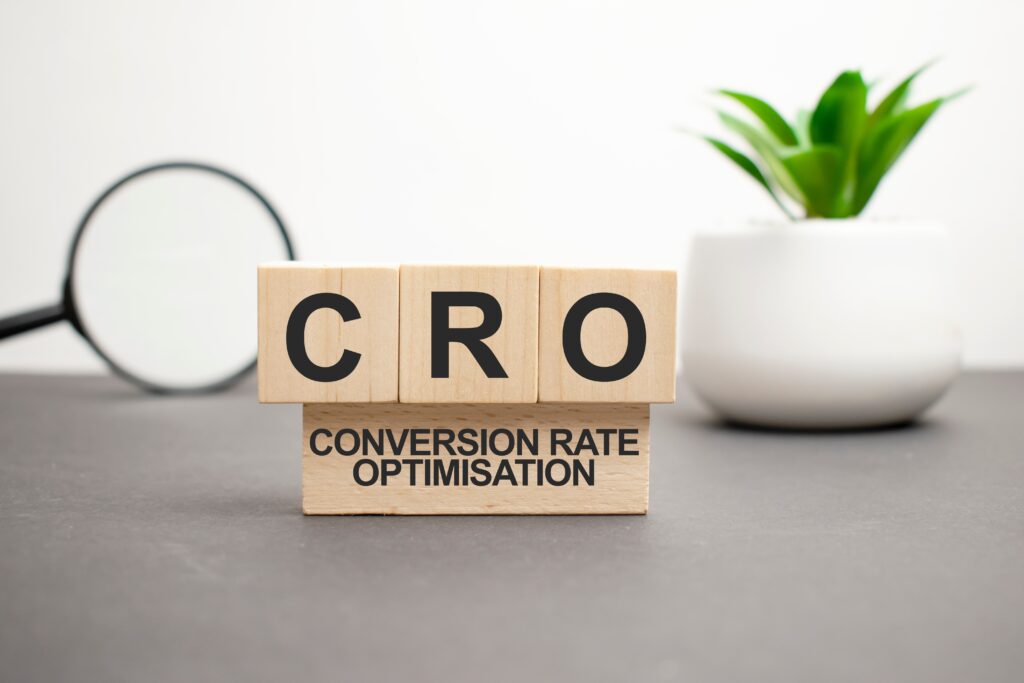
The 5 Types of Conversion Rate Optimization Tools Law Firms Need

Driving traffic to your website is a great start, but it’s not a strategy. You need your website to generate real leads to bring new business to your law practice. This is where conversion rate optimization (CRO) comes in. Use CRO to persuade visitors to complete a desired action, such as downloading a white paper or signing up for a webinar. CRO is a complex and ongoing process, but some tools can make it easier for law firms. Here are 5 types of conversion rate optimization tools that law firms need. These tools will help you gather the proper insights to make the appropriate adjustments to your website that will enable you to convert more traffic and leads.
Conversion Rate Optimization Survey Tools
Conversion rate optimization tools aim to help website visitors become leads and, ultimately, clients for your law firm. To do that, a great place to start is to understand which areas of your website hinder conversions and which help. Survey tools allow you to analyze the end user’s experience, providing insights that can help you further refine actions.
- On-site polls or surveys – These allow you to collect feedback in the moment, or right after. This is a great method for getting inside the minds of potential clients. You can also use them to target specific users based on activity, such as return visitors. Some tools available in this category are Qualaroo or Qeryz.
- Email surveys – Law firms can use email survey tools to provide client sentiment insights and demographic data. They are a great way to capture detailed information from current or prospective clients. Try Google Consumer Surveys or SurveyMonkey.
Conversion Rate Optimization Maps
It’s essential to understand the way visitors navigate and behave on your law firm’s website. Mapping tools can help you to collect this very valuable data. You might hear them referred to as heat maps, and these tools provide real-time, actual behavioral information. There are several types of map tools available, and they make sense for you depending on your particular goals and conversion paths.
- CRO click maps – As the name suggests, these share information on where visitors click on your site. Users can get a visualization with clicks represented by heat – the “warmer” a spot is, the more clicks it represents. You’ll also see them often referred to as heat maps.
- CRO scroll maps – This helps understand how much of a page visitors see. Users can see how far down on the page people scroll so they can better plot their content.
- Mouse movement maps – To better understand what visitors are looking at, these tools provide information on where they move their mouse. It’s very helpful in understanding where users hover, not just click.
There are a few tools that offer all 3 user behavior map reporting capabilities, such as FullStory Hotjar, and Usability Hub.
A/B Tests
A/B testing is important for understanding how users respond to your site and its different elements. These tools send 50% of your visitors to a new version of your site and 50% to the existing version so you can see which performs better. This allows you to use data to make better decisions.
There are lots of A/B testing tools on the market, and many of them use “drag and drop” functionality to make things easy. Some tools small and mid-size firms might want to check out include Google Optimize, Optimizely, Convert.com, or ABTasty.
Heuristic Review
This format entails the evaluation of a site by a group of experienced optimizers using a predetermined evaluative framework. This can be extremely helpful since it offers users a chance to access insights from experts who have optimized hundreds of sites. However, it’s important to note that feedback in these areas tends to be more subjective than other data-based tools. Within the context of CRO, the most commonly used elements of a framework are:
- Motivation
- Value Proposition
- Relevance
- Incentive
- Distractions
- Anxiety and Frictions
Existing Data
Most firms have lots of data available that can help optimize conversions across their website. Don’t overlook existing data that is right at your fingertips. Look for information across three categories:
Previous research – such as focus groups, online research, competitive information
Details from conversations with your clients – call transcripts, meeting notes, etc.
Brand sentiment – measured by social media engagement and online conversations
Personalization Tools
To enhance the effectiveness of CRO, personalization tools have become a must-have in 2024. These tools allow law firms to tailor the user experience based on visitor behavior, demographics, and past interactions. By creating a more personalized experience, you increase the likelihood of conversion, as visitors feel that the content and offers are directly relevant to their needs.
Dynamic Content Tools – Platforms like OptinMonster or HubSpot can dynamically change the content on a webpage based on user behavior and preferences. For instance, a visitor who previously read a blog post on personal injury law might see a related case study or testimonial when they return to the site.
Behavioral Targeting Tools – Tools such as VWO Engage or Marketo allow you to set up triggers for specific actions, like offering a discount to someone who has visited the same service page multiple times without taking action.
Personalized Email Campaigns – Using tools like Mailchimp or ActiveCampaign, you can create personalized email workflows that nurture leads based on their interactions with your website and previous emails. This approach ensures that your communication is more relevant, increasing the chances of conversion.
Takeaway
Conversion rate optimization is critical to ensuring your law firm’s website functions as more than an informational tool. If you’ve been struggling to turn traffic into leads, these 5 types of conversion rate optimization tools, along with the addition of personalization strategies, will help to weed out problem areas, eliminate anything that might stand in the way of your conversion goals, and dramatically improve the return on your other marketing investments. Remember that tools are constantly evolving, and it’s important to do your research to align conversion rate optimization tools with your law firm’s unique goals and needs.
Ready to chat about conversion rate optimization for your website? Contact us today for a free consultation.
Are you ready to get started generating new, qualified leads?
Contact us to get started and let us help you energize your digital marketing and business development efforts.
Contact Us
